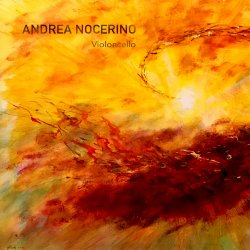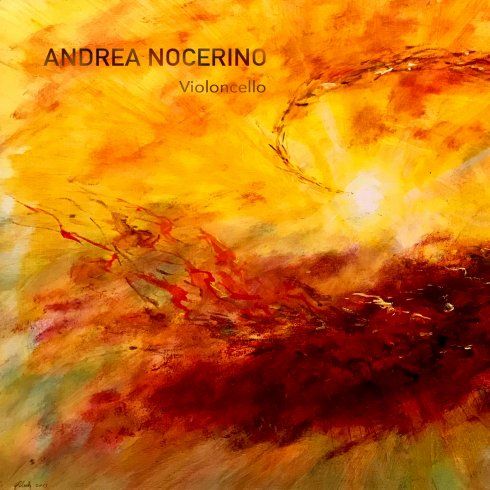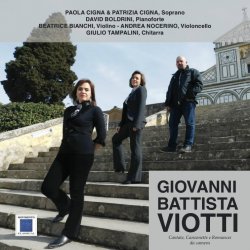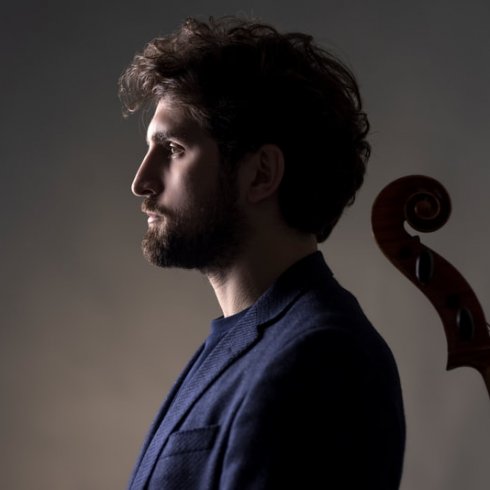

Johann Sebastian Bach: The Art of Sound and Discourse
To work with Andrea Nocerino on Bach's two Celio Suites was stimulating from severa! points of view. Firstly the opportunity thoroughly to study the available manuscript sources, offering the possibility to compare the different printed editions, secondly because it gave rise to long and productive discussions concerning crucial and detailed choices regarding phrasing, articulation and other fondamenta! issues relateci to the historical performance practice.
Hundreds of recordings of the Suites are available on the market nowadays. Therefore, the obvious question arises, why should we add a new recording to the already existing library of remarkable performances by world renowned interpreters?
Primarily to introduce a young enterprising and innovative Italian cellist, who deserves our attention. Additionally, and perhaps more significantly, this recording is an interpretation which attempts to bring to !ife the logie inherent in Bach's musical discourse.
What is meant by this? On one hand, the basic stylistic concepts regarding Baroque Tanz- musik elevateci to a sublime art by the genius Bach, on the other hand, the dose relationship between the art of music (ars musica) and the art of discourse (ars rhetorica) as main aes- thetic principle in the XVIII century.
Regarding the genera! concept of "musical discourse", the German composer and theoreti-
cian Johann Mattheson, a persona! acquaintance of Bach, wrote about "music as sound dis- course" (Klangrede) in one chapter of his fondamenta! treatise "Der vollkommene
Capellmeister"(l739). Here, Mattheson defined six rhetorical principles regarding the forma! disposition of the sound materia! based upon the five fondamentals of oratory presented by Cicero in his De inventione (well known by the intellectuals of that time) which Mattheson named exordium, narratio, propositio, confirmatio, confotatio and peroratio and called dis- positio: Bach himself in his vocal music and large-scale instrumental pieces uses these rhetoric-structural principles.
We find this kind of dispositio also in the specific "rhetoric-musical" conception of the min- iatures, the dance-pieces in the Suites or Partitas, especially in the Allemandes, Courantes, Sarabandes and Gigues. The traditional binary form is in many cases merely a pro forma, be- cause the "discursive" musical process is much more elaborate. An interesting example is in the Gigue of the III Suite, where at the beginning of the second part the listener expects the repetition of the exordium (or at least the inversion of the theme), but this does not happen: instead Bach introduces a completely new idea!
If the dispositio represents the "macrostructure" of the composition, the "microcosm" is represented by the numerous rhetorical figures within every single detail of the musical dis- course. Furthermore, since the pieces in a Suite are dances, the so called topoi should be taken into considerations. These topoi are indispensable in defining and qualifying the par- ticular character of the dances. Por example: the anapaestic upbeat of the Bourrée, the iamb of the Sarabande (fundamental and typical of this dance is indeed the "upbeat on the first beat" and the "accent", or rather an "appoggio", an emphasis on the second beat, which is
- in a ternary rhythm like this - normally an upbeat, an arsis), the dactyl in the Allemande (the one in Suite III is particularly notable), and finally the kaleidoscopically combinatoria! game within the ternary rhythm of the Courante which has the purpose of making the listener lose the sense of the thesis (downbeat). The key element that allows the connection between the macro- and microcosm completing the overall musical discourse is Tempo. This is the cata- lysing element bringing together the aforementioned topoi and rhetoricalfigures.
In his treatise Mattheson reaffirms (as equally many other contemporary sources do) the im- portance for the interpreter of choosing the "right tempo" (tempo giusto). Any arbitrary in- terpretative choice will lead the above-mentioned "musical discourse" to become unsyn- chronised and unintelligible. In considering these four pillars, musical discourse, rhetoric fig- ures, topoi and tempo, with this recorcling we strove to solve some of the enigmas that are present in the different manuscript sources, proposing a solution that is in our opinion logi- ca! and in line with the historical aesthetics expressed above.
Now it is up to the "orator" Andrea playing on his Sbrighi celio (2013) to make Bach's "dis- course" intelligible, while not pretending to give an absolute answer to this matter.
As the Italian poet Giuseppe Ungaretti said: "The poetry is poetry if it carries a secret; if its secret could be decoded in the most elementary way, it would be no longer poetry". The same holds true for Music and Art in generai.
In Solitaria, for Celio Solo
"In Solitaria" for celio solo is a romance composed for Andrea Nocerino between 2018 and 2019. In one movement, "In Solitaria", as a sailing navigation among sounds and musical figures, strive for an ideai prospect of solitary listening, in shadow, to highlight the profound sense of the formai structure of the composition. Listening to Andrea and meeting his artis- tic world was determining. The language of sound is an expressive way capable of embracing the suggestions and emotions that spontaneously arise among musicians. We listened to each other and I was able to create a piece in dialogue with my ideai sounds walking on the four strings of the celio. Each string is a branch to climb on, a sea to navigate in, a lot of sugges- tions, as in a sound diary made of fragments and wrecks of ancient reinvented Sicilian melo- dies, suspended lines, expanses of sound, distant echoes and waves that suddenly emerge, an aria with variations, a sailing without a predetermined, open, free destination.



Andrea Nocerino
Trained with the cellist Silvia Chiesa and graduated with honors and honorable mention at the Conservatory of Cremona, in recent years he has shared the stage with established performers such as Maurizio Baglini, Guido Corti, Roberto Noferini, Francesco Fiore, Vladimir Mendelssohn, Fine Arts Quartet and Silvia Chiesa, as well as with some of the best musicians of his generation. He has performed in important competitions including “Amiata Piano Festival”, “Teatro di Villa Torlonia”, “Auditorium Arvedi”, “Museo del Teatro Alla Scala”, “Musica Vicenza”, “Auditorium Gaber” in Milan, “Teatro Ponchielli” in Cremona or “Musei Vaticani”. Abroad he was invited to Croatia (Rijeka), France (Musique en Madiran), the United States (University of Chicago) and South Korea (Goryeong Gun Nuri Hall).
As a soloist he gave concerts throughout Italy, also deepening the study of the Suites of Johann Sebastian Bach to which he dedicated his debut record. Attentive to the contemporary repertoire, he is dedicatee of some works for solo cello among which a recent piece by the composer Marco Betta stands out; he also performs in several premieres and collaborates actively with festivals and ensembles of the national scene. He has recorded for Rai Radio3, Amadeus, Movimento Classical.
At the beginning of 2019, in collaboration with the Violin Museum of Cremona, he was entrusted with the task of recording and cataloging the sound of the "ex Cristiani-Stauffer" Stradivari Cello for the international project of the "Sound Bank".
Currently the Violin Museum of Cremona has designated him as custodian musician of the precious Stradivarius Cello and reference for all the historical instruments of the collection.
